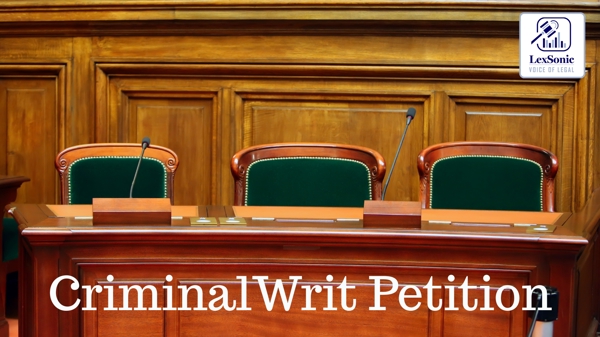Tackling India's High Court Backlog: A Call for Coordinated Action.
08 May 2025
Writ Petition >> Criminal Law
India's High Courts face a formidable challenge: a staggering backlog of over 7.24 lakh criminal appeals as of March 22, 2025. This massive pendency, disproportionately high in courts like Allahabad, Madhya Pradesh, and Punjab & Haryana, directly impacts the fundamental rights of the accused under Article 21 of the Constitution. The Supreme Court, acknowledging the gravity of the situation, has initiated a multi-pronged approach to address this crisis, drawing upon extensive recommendations from legal experts and its own judicial committees.
Key Issues and Proposed Solutions:
A detailed note submitted by Amicus Curiae, Senior Advocates Ms. Liz Mathew and Mr. Gaurav Agarwal, along with their team, has been instrumental in highlighting critical areas and offering constructive suggestions, which the Supreme Court largely endorses.

1. Judicial Vacancies and Resource Allocation:
- Problem: A significant correlation exists between judicial vacancies and the mounting pendency. For instance, the Allahabad High Court, with the highest backlog, operates with only 88 judges against a sanctioned strength of 160.
- Solution: The Supreme Court emphasizes the urgent need for the Central Government to clear pending recommendations for High Court judicial appointments in a time-bound manner, noting several recommendations from 2023, 2024, and 2025 that are still awaiting approval.
2. Optimizing High Court Operations:
- Video Conferencing: High Courts with multiple benches should explore video conferencing to allow benches with lower pendency to hear appeals from those with greater backlogs, thereby improving overall disposal rates.
- Rationalized Roster: Chief Justices are urged to consider dedicated benches for criminal appeals, ensuring that these benches are not burdened with other categories of work, which will lead to faster disposal of older cases.
- Domain Expertise: Assigning criminal work to judges with relevant domain expertise is recommended to ensure speedy and efficient disposal of appeals.
3. Addressing Adjournments:
- Problem: Frequent adjournments at the final hearing stage of criminal appeals contribute significantly to delays.
- Solution: While acknowledging judicial discretion, the Supreme Court advises High Courts to utilize the precedent set in Bani Singh v. State of Uttar Pradesh by appointing legal aid lawyers when there is non-cooperation from the counsel for the accused.
4. Registry-Level Enhancements and Digitization:
- Registry Due Diligence: The Supreme Court recommends implementing suggestions for improved registry-level due diligence, including the creation of a dedicated post for Registrar, Court and Case Management.
- Digitization of Records: A major cause of delay is the slow transmission and translation of trial court records. High Courts are directed to prioritize the digitization of criminal court records, starting with Sessions Courts and Special Courts.
- AI-Powered Translation: The Supreme Court's AI tool, SUVAS (Supreme Court Vidhik Anuvaad Software), is recommended for translating records, with a crucial caveat for human vetting to ensure accuracy.
- Automated Record Calling: High Courts should amend procedural rules to automatically call for soft copies of trial court records as soon as a notice is issued in a criminal appeal, preventing delays in hearing.
5. Bail and Sentence Suspension:
- Problem: In many High Courts, accused individuals are denied bail even in cases with limited duration sentences.
- Solution: The Supreme Court reiterates its consistent position that power of suspension of sentence under Section 389 of the Code of Criminal Procedure, 1973 should be exercised liberally for fixed-period sentences, unless exceptional circumstances dictate otherwise.
Path Forward and Collaborative Effort:
The Supreme Court has directed all High Courts to consider this order, the Baseline Report on Case Management by the National Court Management System (NCMS), the Model Action Plan for Reduction of Arrears, and the Amicus Curiae's suggestions. High Courts are given four months to submit their own action plans, which will then be shared among all courts to promote best practices.
Emphasis is placed on prioritizing criminal appeals where the accused are in jail. However, a balance must be struck by also giving priority to appeals against conviction where the offense is heinous, the accused are of advanced age, or life sentences have been granted, even if the accused are on bail.
This comprehensive strategy underscores the urgent need for a concerted effort from all stakeholders—the judiciary, the government, and legal professionals—to alleviate the immense burden on the High Courts and uphold the rights of individuals awaiting justice.
